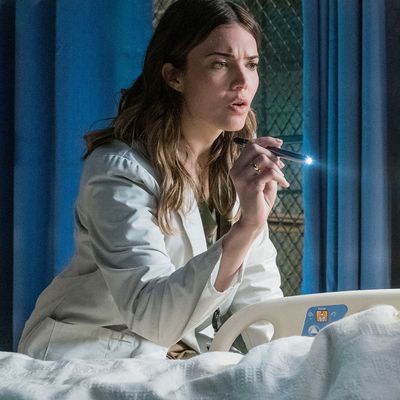
Perhaps it seems a little bit simplistic to say so, but judging from the overall tenor of YA blockbusters in the last decade, it really must be quite scary to be a teen these days. Because tweens aren’t going to flock en masse to anything that doesn’t truly capture their imaginations, it can be fun to do a kind of very nonprofessional 1:1 sociological reading of whatever the dystopian saga du jour is. In The Darkest Minds, a mysterious illness wipes out half the child population; the survivors are a bunch of evolutionarily advanced super-children who are immediately sent to camps or drafted into mutant armies once they are identified by the terrified adults. Clearly the idea of a generation that is smarter, stronger, and capable of more destruction than any before it is a perennial anxiety, but the emphasis here is on their survival — their resistance to a thing that wants to destroy them indiscriminately.
One of these survivors is Ruby (Amandla Stenberg), who inadvertently wipes her parents’ memory of her and the next morning is shipped off to the camps. She’s an Orange — capable of Jedi-like mind control, and in this color-coded new era, one of the more dangerous mutations to possess. (Since Harry Potter, YA fiction has been preoccupied by various iterations on Sorting Hats, and breaking the limitations of their categorization.) Oranges are killed on sight, so Ruby passes herself off as a Green, the most common and harmless mutation (they’re just good at math, clearly the Hufflepuffs of the Mindsverse.) Years pass, until, as a 16-year-old, her cover is blown, and she is smuggled out of the facility by an undercover counselor (Mandy Moore) looking for recruits for an army of every color in the rainbow. But Ruby’s Orange Sense goes off almost immediately, and she hooks up instead with a ragtag team of kids making their way to a perhaps mythical safe zone.
Having not read the novel by Alexandra Bracken on which it is based, I can only judge Chad Hodge’s adaptation, which doesn’t have much going for it in terms of stakes. It’s a very “and then” movie, not even sure how to work in a subplot involving a bounty hunter played by a bewigged Gwendoline Christie and ultimately dispatching with it altogether. Director Jennifer Yuh Nelson, in her live-action debut (she’s a veteran of the Kung Fu Panda animated franchise), works up a nice chemistry between the central four kids — particularly the romance between Stenberg and Beach Rats’ Harris Dickinson as a telekinetic dreamboat. But when she tackles the larger workings of The Darkest Minds’ world, there’s a lot that’s confusing or poorly set up. That’s a script problem, but also a lack of emotional direction and momentum. A character mentioned in passing in the film’s first act plays a pivotal part in its last one, but we don’t have enough information about him for it to actually feel like a coherent surprise.
The Darkest Minds ends with a cue-up for a sequel; I’d be hard-pressed to guess what the stakes are, and what its rallying call is rallying for. Its climax is soundtracked by the kind of buoyantly apolitical electropop that is typically heard on commercials for phone carriers; it reads as teen-oriented but otherwise without any grit or direction. Perhaps that doesn’t matter for viewers more invested in its supernatural star-crossed love story — the disarray and conflict surrounding our heroine needn’t be legible so long as it tragifies her romance. But I wanted to know more about this fearful world and what it supposes a gifted girl like Ruby ought to do in it, if only because every imagined dystopia — especially those aimed at young audiences — are a mirror of sorts. The Darkest Minds is just too foggy to make out much of anything in.




